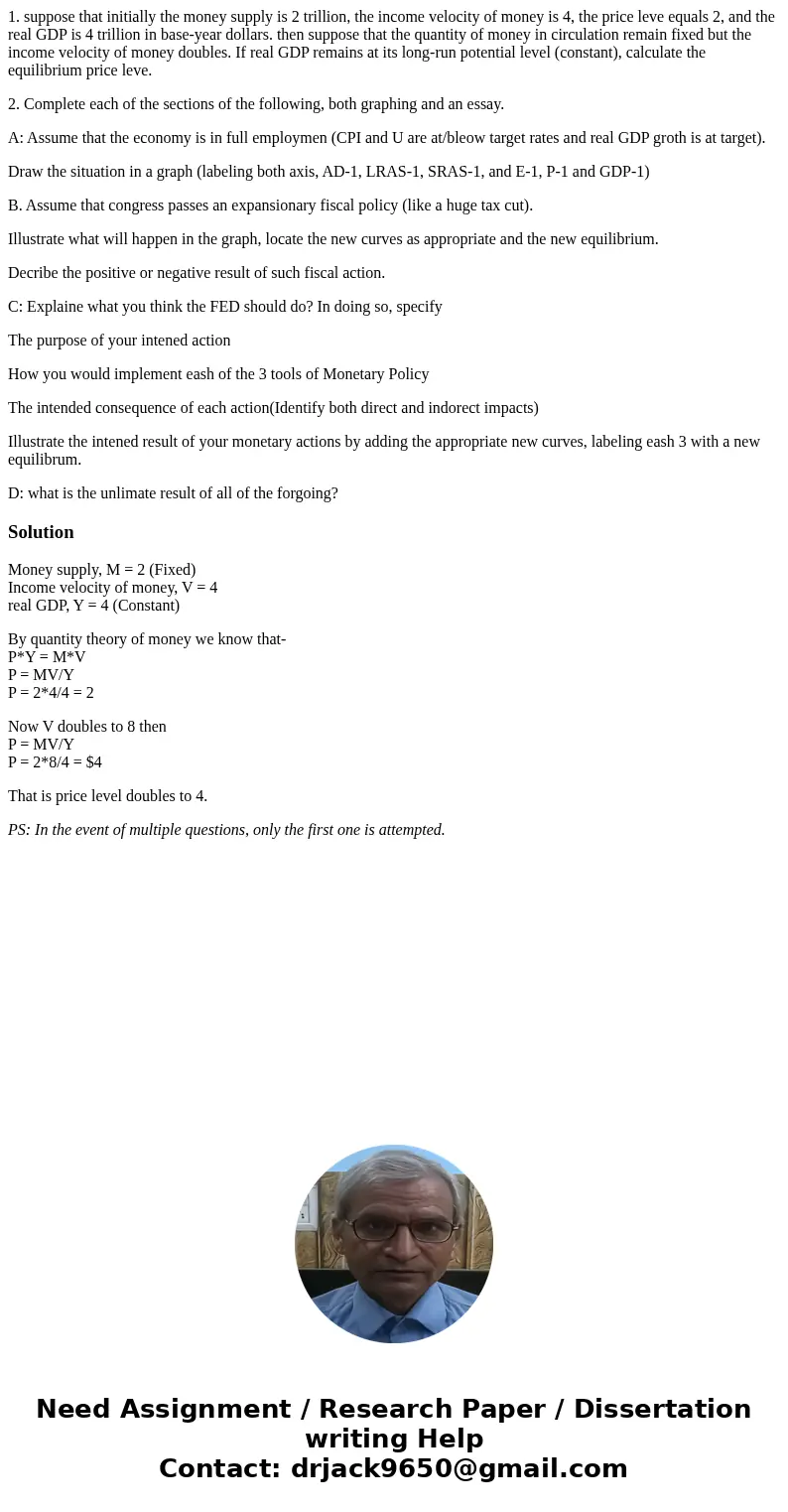1 suppose that initially the money supply is 2 trillion the
1. suppose that initially the money supply is 2 trillion, the income velocity of money is 4, the price leve equals 2, and the real GDP is 4 trillion in base-year dollars. then suppose that the quantity of money in circulation remain fixed but the income velocity of money doubles. If real GDP remains at its long-run potential level (constant), calculate the equilibrium price leve.
2. Complete each of the sections of the following, both graphing and an essay.
A: Assume that the economy is in full employmen (CPI and U are at/bleow target rates and real GDP groth is at target).
Draw the situation in a graph (labeling both axis, AD-1, LRAS-1, SRAS-1, and E-1, P-1 and GDP-1)
B. Assume that congress passes an expansionary fiscal policy (like a huge tax cut).
Illustrate what will happen in the graph, locate the new curves as appropriate and the new equilibrium.
Decribe the positive or negative result of such fiscal action.
C: Explaine what you think the FED should do? In doing so, specify
The purpose of your intened action
How you would implement eash of the 3 tools of Monetary Policy
The intended consequence of each action(Identify both direct and indorect impacts)
Illustrate the intened result of your monetary actions by adding the appropriate new curves, labeling eash 3 with a new equilibrum.
D: what is the unlimate result of all of the forgoing?
Solution
Money supply, M = 2 (Fixed)
Income velocity of money, V = 4
real GDP, Y = 4 (Constant)
By quantity theory of money we know that-
P*Y = M*V
P = MV/Y
P = 2*4/4 = 2
Now V doubles to 8 then
P = MV/Y
P = 2*8/4 = $4
That is price level doubles to 4.
PS: In the event of multiple questions, only the first one is attempted.

 Homework Sourse
Homework Sourse